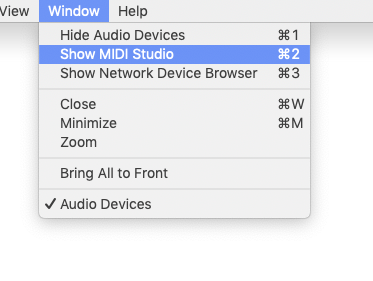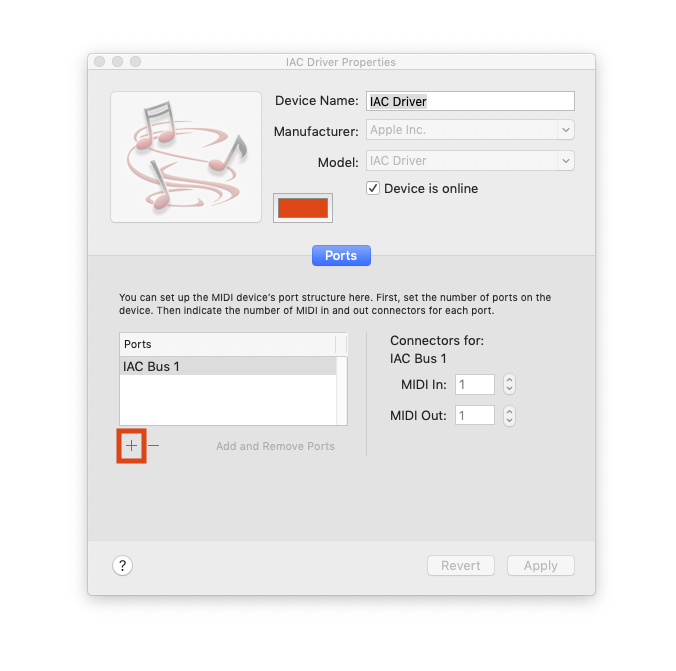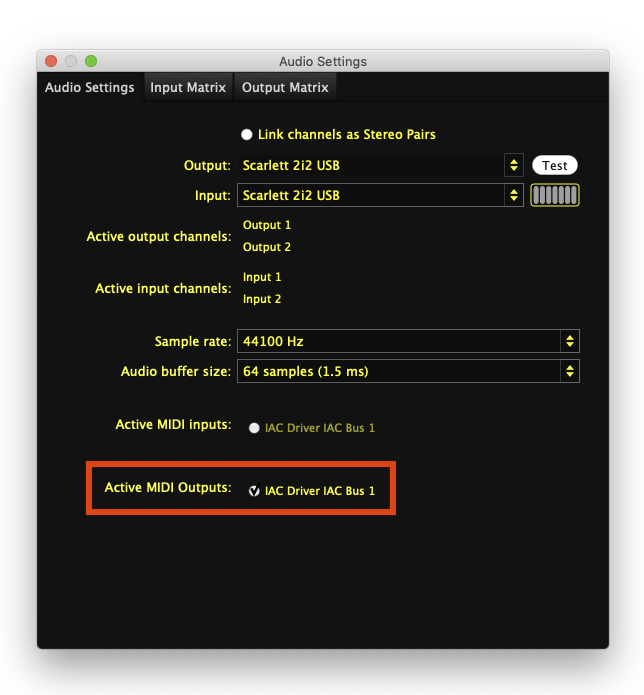How to Route and Record MIDI
Sending MIDI between Sensory Percussion and another application on the same computer requires a few steps, since you'll be essentially running virtual MIDI cables between the two programs.
On a Mac you'll use the Audio MIDI Setup app:
- Open Audio MIDI Setup.app (it's located in your Applications/Utilities folder):
- Click Show MIDI Studio under Window in the top menu.

- In the window that appears, double click on the IAC Driver Icon to reveal another window.
![]()
- In that new window, click the "+" button to add ports.

On a computer running a Windows OS, you'll need to install a 3rd party virtual MIDI driver like loopMIDI. Follow the instructions provided by the 3rd party to set it up.
Next, in Sensory Percussion, select the virtual bus as an active MIDI Input or Output (depending on whether you are sending or receiving from or to Sensory Percussion)

Now, in the other application, select the virtual bus as a MIDI Input/Output, as well.
To record MIDI from Sensory Percussion, first map all of the parameters you will be recording to channels and controllers in your DAW (see MIDI Panel) and then record the MIDI performance just like you would if you were using a MIDI keyboard.
Make sure that the MIDI channels in Sensory Percussion correspond to MIDI channels in your DAW.